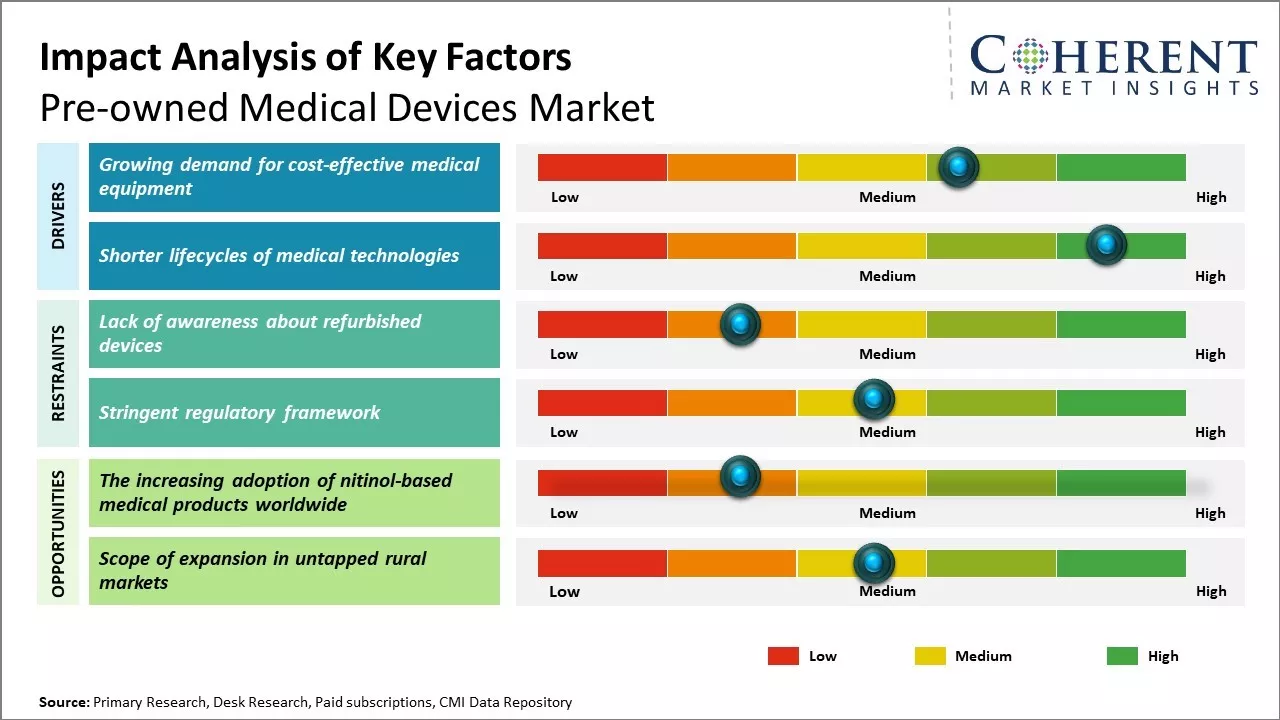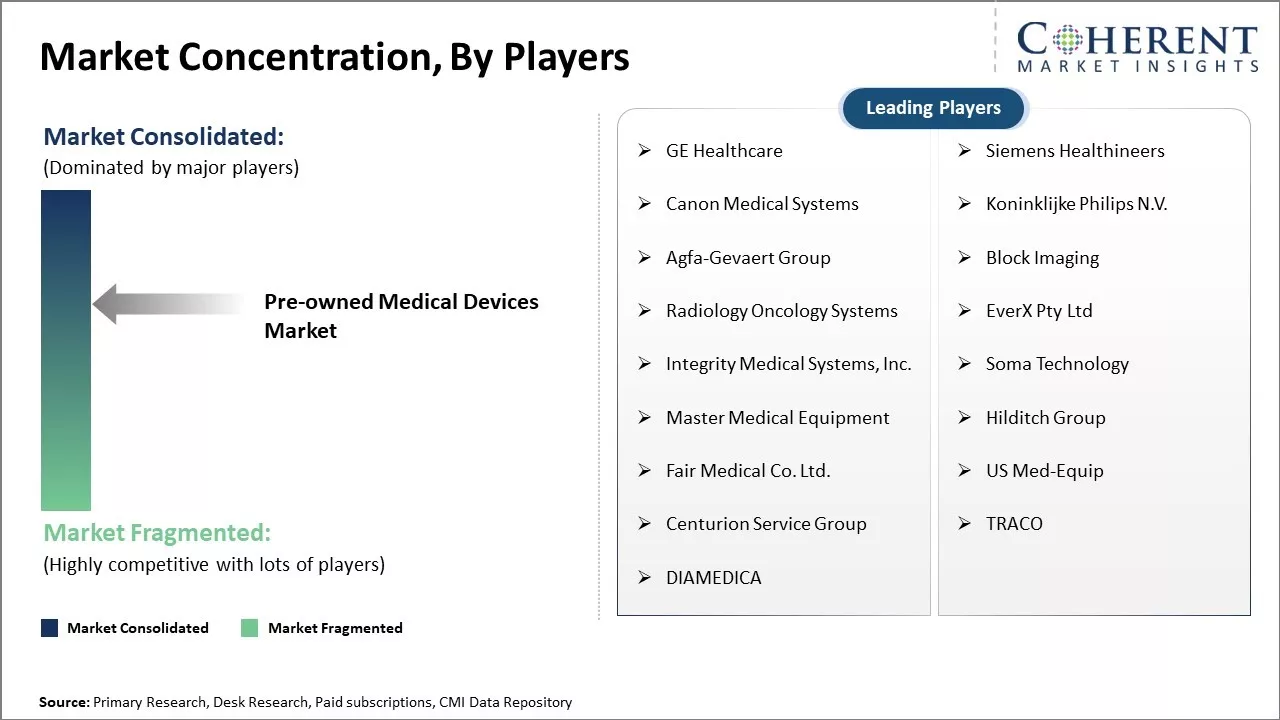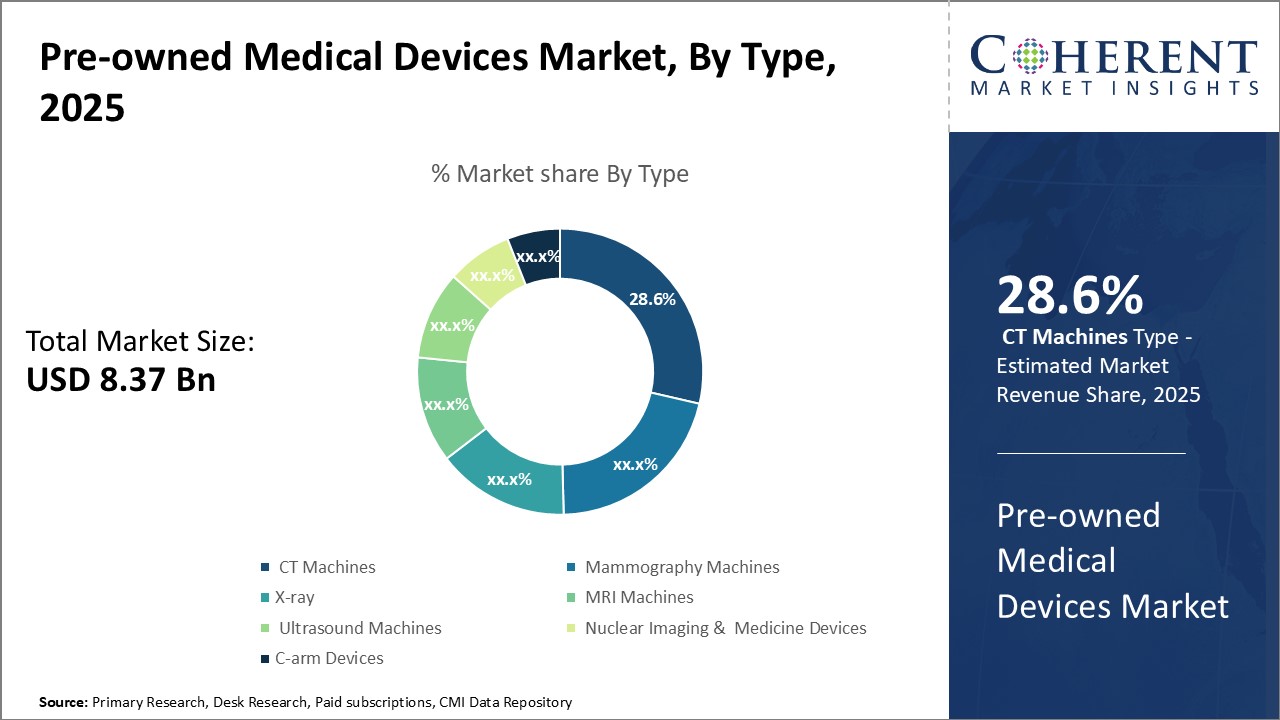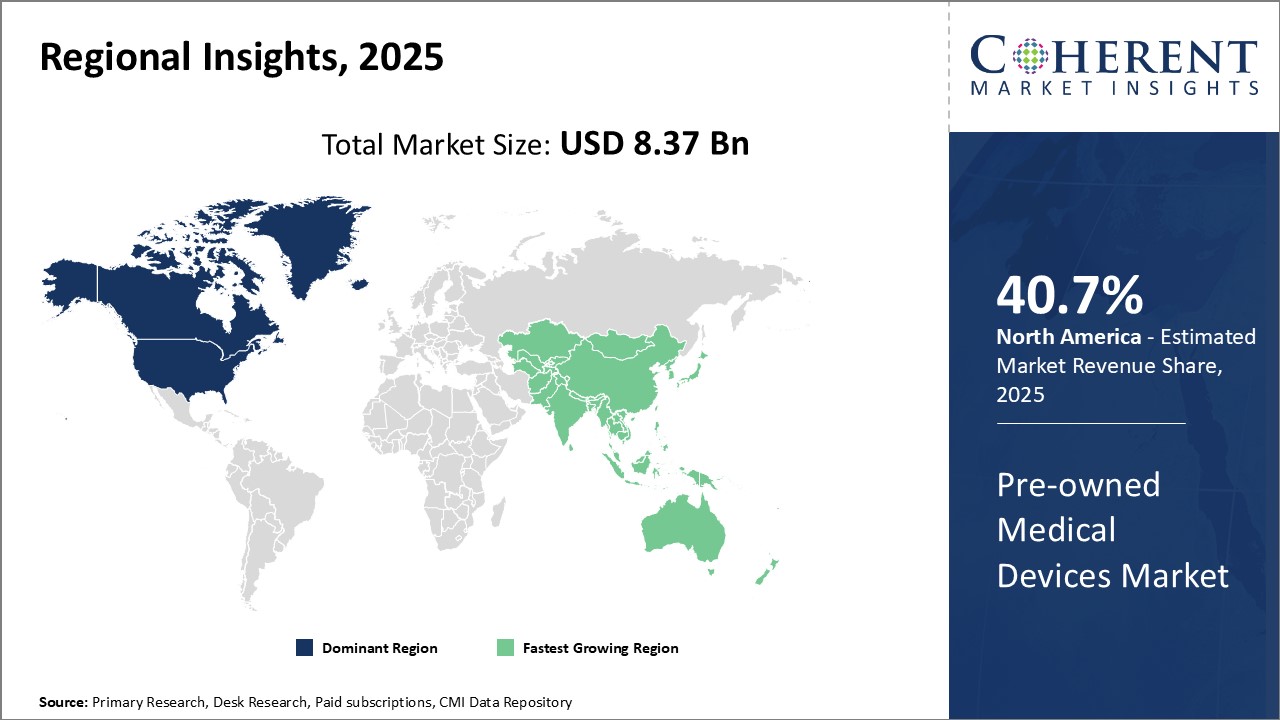Global pre-owned medical devices market is estimated to be valued at USD 8.37 Bn in 2025 and is expected to reach USD 17.72 Bn by 2032, exhibiting a compound annual growth rate (CAGR) of 11.3% from 2025 to 2032.

Discover market dynamics shaping the industry: Download Free Sample
Global pre owned medical devices market has been witnessing growth over the past few years due to factors like rising need to reduce healthcare costs, increasing demand for affordable medical devices especially in emerging nations and growing awareness about services offered by refurbished medical device providers. Many hospitals and clinics in developing and developed regions opt for pre-owned medical equipment to manage budgets. Furthermore, implementation of stringent regulations regarding disposal of used medical devices and providing refurbished options as a sustainable solution can boost sales in recent times. However, availability of alternative rented models and perceived product quality concerns associated with refurbished devices can hamper the market growth over the forecast period.
Growing demand for cost-effective medical equipment
Rising cost of healthcare across the globe has pushed many hospitals and clinics, especially in developing regions, to rely more on pre-owned medical devices. New medical equipment can be extremely expensive for most healthcare facilities in low and middle-income countries. Meanwhile, there has been huge demand for advanced medical imaging, diagnostic and surgical equipment with expanding patient access. Refurbished machines that are recertified to the original high standards offer a viable compromise. These provide quality medical care at a fraction of the price of new devices. This has significantly boosted demand for pre-owned equipment over the past decade. Several organizations have entered the space to source, repair and resell used medical devices to areas that cannot afford the high cost. With more players mediating this trade, it has become safer and streamlined with reliable warranty and servicing support. The cost differential is quite significant as compared to similar new equipment. This value proposition will drive healthcare providers, especially in emerging markets, towards pre-owned options to meet patient needs affordably. For instance, in April 2025, according to the article published by the Economic Times, India's drug pricing regulator is developing a fresh pricing framework for medical devices. The National Pharmaceutical Pricing Authority (NPPA) expert committee is examining the current price regulations adopted in other nations to devise a distinct pricing mechanism tailored for medical device manufacturers operating in India. In February 2021, the Indian government investigated suspicions surrounding the high costs of 24 medical devices and has requested pricing details from manufacturers and importers. While the prices of certain devices like coronary stents, drug-eluting stents, condoms, and intrauterine devices are already regulated by the National Pharmaceutical Pricing Authority (NPPA), manufacturers themselves set prices for the remaining categories. NPPA has provided a three-week deadline for the submission of pricing details.

Get actionable strategies to beat competition: Download Free Sample
Shorter lifecycles of medical technologies
The fast pace of technology innovation in the healthcare sector can drive the market growth. Newer and improved models of medical devices are constantly being launched by manufacturers. This results in much shorter useful lifecycles for existing equipment before these are replaced, even though the machines may still be functionally capable. Hospitals in developed countries routinely upgrade to latest technology to provide state-of-the-art care and for marketing purposes. This leads to a steady flow of nearly new devices entering the resale market. Many of these devices have only been used for a year or two of their potential life spans of 5-7 years. These offer similar performance to brand new equipment at significantly lower prices. Integrated OEM refurbishing programs and independent refurbishers help restore the devices to original specifications, with recertification and warranties. This secondary market offers a win-win for cash-strapped hospitals seeking affordable devices and suppliers trying to extend the life of medical capital equipment. It has efficiently circulated usable medical technology worldwide.
Key Takeaways from Analyst:
Global pre-owned medical devices market growth is driven by factors like growing cost-sensitive demand from hospitals and clinics in developing regions as pre-owned devices offer significantly lower prices as compared to new devices. Budget constraints faced by many healthcare institutions make pre-owned devices an attractive proposition.
Strict controls and certifications required for selling refurbished devices in certain markets can hamper the market growth. Maintaining and ensuring the quality of pre-owned devices also poses difficulties.
Regions like Asia Pacific and Latin America provide huge opportunities due to increasing healthcare infrastructure and lower equipment densities. Lack of access to cutting edge technologies in several developing nations of these regions makes them prime target markets. North America will continue dominating the global market owing to strong presence of refurbishing companies and large secondary market.
Market Challenges: Lack of awareness about refurbished devices
Lack of awareness about refurbished medical devices being a viable and cost-effective option can hamper the global pre-owned medical devices market growth. Many hospitals and healthcare facilities in developing nations are not fully aware about the benefits of procuring refurbished medical equipment. These have concerns around the quality, lifespan and reliability of pre-owned devices. This is primarily due to the stigma attached to terms like 'used' and 'refurbished' in the medical equipment sector. However, what many of them fail to realize is that refurbished does not necessarily mean sub-standard. Refurbishing processes are very thorough and involve complete dismantling of devices, replacement or repair of worn-out parts, extensive quality assurance testing and renewal of certifications.
Market Opportunities: Increasing adoption of nitinol-based medical products worldwide
Rural regions across developing nations have witnessed tremendous growth in healthcare requirements due to rising income levels and awareness. However, access to advanced healthcare remains a challenge due to low density of healthcare facilities and affordability concerns for newer medical devices. This untapped rural patient pool can be served more effectively through pre-owned medical devices. Refurbished devices which are 20-30% cheaper than new ones, not only increases accessibility but also allows for higher return on investment for rural hospitals/clinics. This expand healthcare coverage while keeping operational costs under check. Nations like India have ambitiously targeted building primary health centers in rural areas under Ayushman Bharat program. Pre-owned devices emerge as a viable and sustainable option to equip these new rural centers with advanced diagnostics and treatment capabilities.

Discover high revenue pocket segments and roadmap to it: Download Free Sample
In terms of By Type, CT machines segment contribute the highest share of the market owing to demand for advanced diagnostic techniques
By type, CT machines segment is estimated to contribute the highest market share of 28.1 % in 2025, due to increasing adoption of advanced diagnostic procedures that rely on high quality CT images. Being considered the gold standard for diagnosis, CT scans provide more detailed information about bones, muscles, fat, and organs as compared to regular X-rays. These are able to detect even tiny abnormalities and help doctors arrive at an accurate diagnosis. With technological advancements, modern CT machines offer greater imaging capability with higher resolution and more anatomical coverage. This allows specialists to gain deeper insights into the human anatomy. CT scans have revolutionized treatment planning and monitoring across various therapeutic areas like oncology, cardiology and neurology. The non-invasive nature of CT further boosts its demand over invasive procedures. With rising lifestyle diseases and cancer incidence globally, there is greater clinical need for CT technology.
In terms of End User, Hospitals segment contribute the highest share, owing to high patient volumes
Within the end user segment, hospitals segment is estimated to hold market share of 40.12 % in 2025, due to their large patient bases requiring diagnostic tests and treatments. Hospitals cater to a diverse patient mix, including those from rural areas, the elderly and underprivileged groups. With the aim of serving communities comprehensively, hospitals rely greatly on cost-effective medical technologies. Provided rising healthcare costs and budget constraints faced by public hospitals, investing in refurbished devices is a feasible choice. It enables upgrading of aging equipment in various clinical departments from radiology and cardiology to neurology. This helps hospitals expand diagnostic services and clinical capacity while keeping service affordable and accessible for all patient groups. Large private hospitals also benefit from pre-owned systems through optimized resource utilization.

Need a Different Region or Segment? Download Free Sample
North America has established itself as the dominant region in the global pre-owned medical devices market with estimated market share of 40.2 % in 2025. With strong presence of major market players and developed healthcare infrastructure, the U.S. accounts for the largest market share. The country is home to many large medical device companies that actively refurbish and resell used medical equipment. The favorable regulations promote recommercialization activities. Hospitals and clinics widely accept pre-owned devices due to cost savings achieved through refurbished systems.
Asia Pacific is expected to be the fastest growing market. Growing healthcare expenditures and expansion of private healthcare have boosted investments in medical technologies across major countries like India, China and Indonesia. This rising demand encourages greater acceptance of pre-owned devices. The lack of established reverse logistics and weakness in refurbishing capabilities have opened opportunities for international U.S. players to set up local operations.
Pre-owned Medical Devices Market Report Coverage
| Report Coverage | Details | ||
|---|---|---|---|
| Base Year: | 2024 | Market Size in 2025: | USD 8.37 Bn |
| Historical Data for: | 2020 To 2024 | Forecast Period: | 2025 To 2032 |
| Forecast Period 2025 to 2032 CAGR: | 11.3% | 2032 Value Projection: | USD 17.72 Bn |
| Geographies covered: |
|
||
| Segments covered: |
|
||
| Companies covered: |
GE Healthcare, Siemens Healthineers, Canon Medical Systems, Koninklijke Philips N.V., Agfa-Gevaert Group, Block Imaging, Radiology Oncology Systems, EverX Pty Ltd, Integrity Medical Systems, Inc., Soma Technology, Master Medical Equipment, Hilditch Group, Fair Medical Co. Ltd., US Med-Equip, Centurion Service Group, TRACO, DIAMEDICA |
||
| Growth Drivers: |
|
||
| Restraints & Challenges: |
|
||
Uncover macros and micros vetted on 75+ parameters: Get instant access to report
*Definition: Global Pre-owned Medical Devices Market consists of pre-owned or refurbished medical equipment and devices that are bought, sold, and distributed in the global market. This market provides cost-effective alternatives to expensive new medical devices for healthcare facilities in both developed and developing countries. The pre-owned medical devices sold include CT scanners, MRI machines, ultrasound machines, x-ray machines, operating room equipment, patient monitors, and various other medical instruments that are refurbished and routinely inspected.
Share
Share
About Author
Komal Dighe is a Management Consultant with over 8 years of experience in market research and consulting. She excels in managing and delivering high-quality insights and solutions in Health-tech Consulting reports. Her expertise encompasses conducting both primary and secondary research, effectively addressing client requirements, and excelling in market estimation and forecast. Her comprehensive approach ensures that clients receive thorough and accurate analyses, enabling them to make informed decisions and capitalize on market opportunities.
Missing comfort of reading report in your local language? Find your preferred language :
Transform your Strategy with Exclusive Trending Reports :
Frequently Asked Questions
Joining thousands of companies around the world committed to making the Excellent Business Solutions.
View All Our Clients